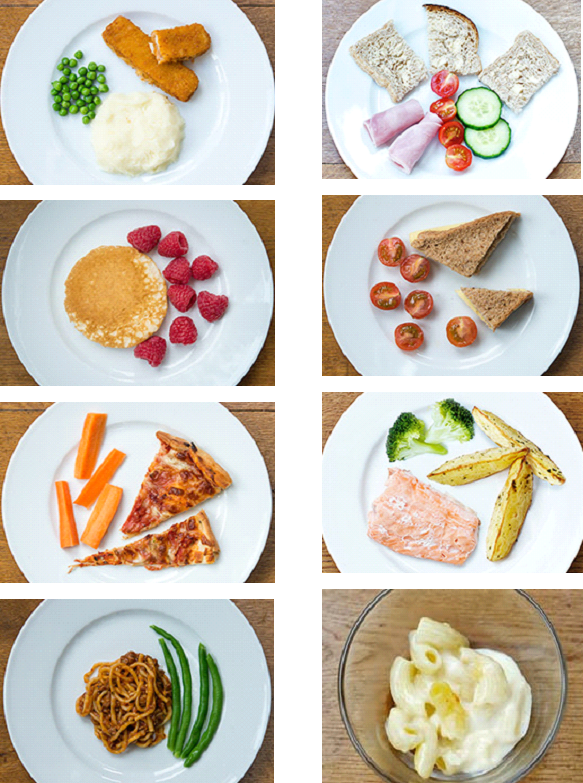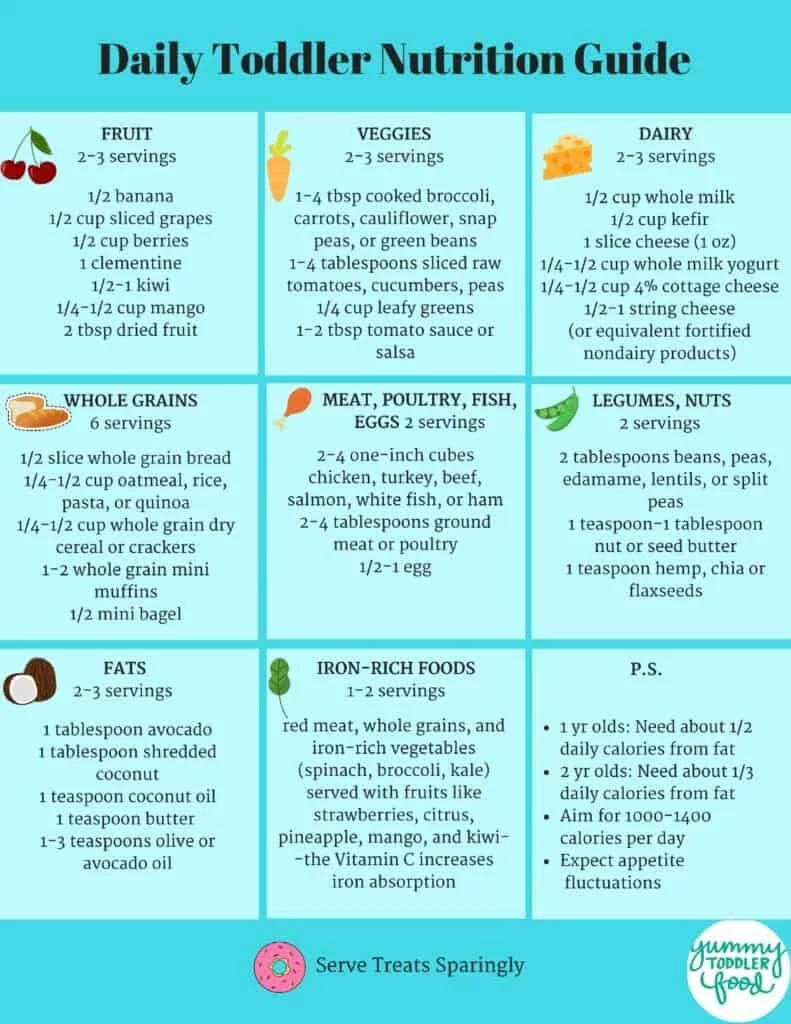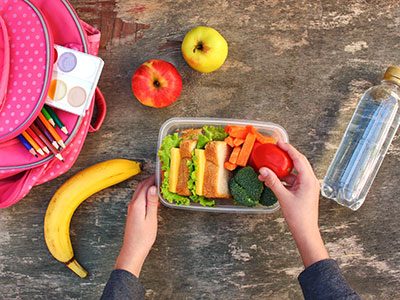Pediatricians frequently encounter parents who express concern for a child who they describe as a “picky eater.” This complaint is often associated with children between 2 and 5 years of age.
If your child has a history of poor growth, you may be especially prone to hypervigilance regarding their eating, which can lead to stress and anxiety surrounding mealtimes. While there are some children that will require intervention, most parents can be reassured that their child is getting the nutrients they need to grow and thrive.
Portion sizes
The following portion size pictures may be helpful for parents of young children who are felt to be difficult or picky eaters.

Easy to chew proteins
Protein foods can be challenging for some kids in this age group. Foods that are easy to chew are good alternatives to more traditional options.
Eggs
- Scrambled
- Poached
- Soft boiled
- Fried
- Hard boiled, chopped or sliced
- Egg salad
Dairy
- Cheese stick
- Grated cheese
- Melted cheese
- High calorie yogurt
- Whole milk
- Sliced cheese – rolled, cut in strips or fun shapes
- Cottage cheese
- Cream cheese
- Powdered milk
- Yogurt (no fruit added)
Fish
- Canned tuna or salmon
- Flaky white fish or fish sticks
- Crab meat – fresh or canned
Meat and poultry
- Hot dogs – chopped, cut in long strips
- Deli meats – thin slices, rolled, cut in strips
- Breakfast sausage – chopped, cut in long strips
- Bacon cooked crispy
- Chicken nuggets or sticks
- Cooked ground chicken
- Turkey meatballs

General feeding guidelines
- Meals should be offered at 3-4 hour intervals with only water offered in between. Even small amounts of juice or milk can diminish appetite for the next meal.
- Offer your child 2-3 foods in small amounts that include at least two foods you know they have eaten happily in the past. If they don’t eat any of these, do not look for alternatives.
- Eat family meals whenever possible. Role modeling is probably the most powerful step you can take to help improve your child’s feeding behaviors.
- Your child should sit at the table whether or not they are eating for at least 15 minutes. Tell them that they need to wait until everyone else is finished.
- Do not pay attention to whether or not your child is eating consistently at mealtime. Do not cajole or plead with them to eat. No games (think airplane in the hangar) to get them to eat more.
- If your child does not eat anything after 15-20 minutes, they should be allowed to leave the table if the family meal is completed. Nothing should be offered until the next scheduled meal or snack. If they ask for food soon after the meal, tell them that the kitchen is closed for now and then remind them when the next meal or snack is.
- Be creative when it comes to foods offered at meal times. An example would be serving pancakes and eggs for dinner!
- Offer the highest calorie foods to your child first when they are most likely to eat them. Lower calorie foods such as fruits and vegetables can be offered towards the end of the meal.
- Aim for one or two good meals a day. If your child seems super hungry at snack time, make sure you offer them something substantial such as yogurt, cheese, or granola bar.
Feeding division of responsibility
It is your job to decide:
- when your child will eat
- what your child will be offered to eat
- where they will eat
It is your child’s job to decide how much they will eat!
 https://riseandshine.childrensnational.org/wp-content/uploads/2025/12/Mom-nursing-feature.jpg
300
400
Rise and Shine
https://riseandshine.childrensnational.org/wp-content/uploads/2017/11/childrens_riseandshine_logo.jpg
Rise and Shine2025-12-04 11:29:032025-12-04 11:29:03Tips for surviving your first month of breastfeeding
https://riseandshine.childrensnational.org/wp-content/uploads/2025/12/Mom-nursing-feature.jpg
300
400
Rise and Shine
https://riseandshine.childrensnational.org/wp-content/uploads/2017/11/childrens_riseandshine_logo.jpg
Rise and Shine2025-12-04 11:29:032025-12-04 11:29:03Tips for surviving your first month of breastfeeding























Leave a Comment
Want to join the discussion?Feel free to contribute!